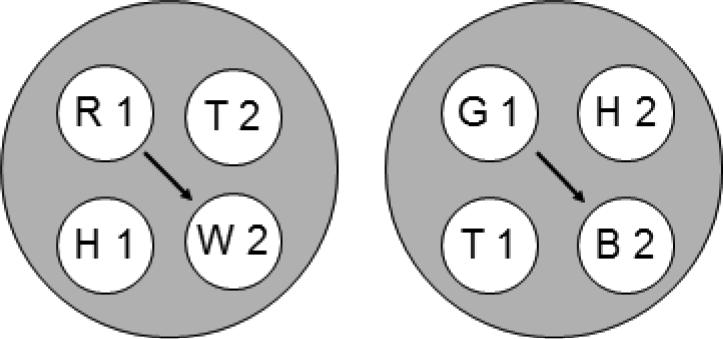Figure 7.
The two 4-member stimulus classes hypothesized to result from merging classes that contain common elements (cf. Figure 3). Letters denote the nominal stimuli (R = red, G = green, B = blue, W = white, T = triangle, H = horizontal) and numbers denote ordinal position in matching trial (1 = first (sample), 2 = second (comparison)). Arrows indicate predicted emergent transitive relations.

